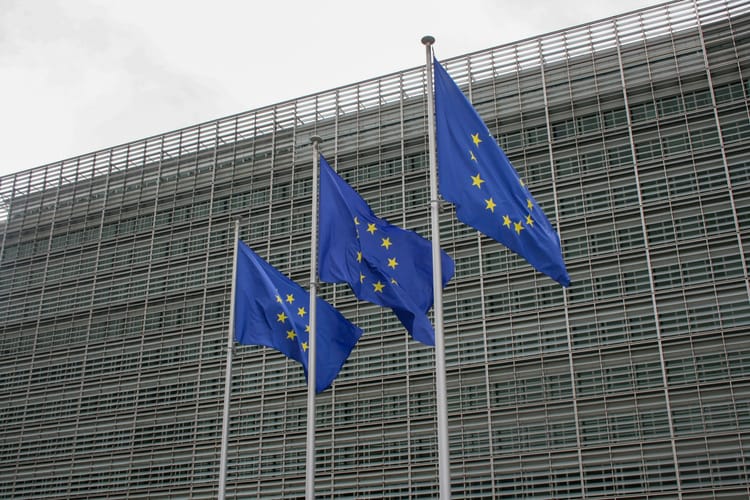Companies still report less than half of TCFD climate disclosures – and almost none report on climate resilience

Despite steady progress, companies still report less than half (5.3) of the 11 TFCD climate disclosures, and the majority haven’t assessed their resilience to climate change yet.
That’s according to the latest progress report of the Task Force on Climate-Related Financial Disclosures (TCFD), a global climate risk disclosure framework.
The organisation, which published its 11 recommendations on how companies should disclose their climate risks to investors back in 2017, used AI to scan climate-related financial disclosure data published by hundreds of public companies in 2022. It found that 58% of them disclosed in line with at least five disclosures, a net improvement from just 18% in 2020. However, only 4% of corporates disclosed in line with all 11 recommendations.
TCFD’s 11 climate disclosure recommendations
The TCFD’s climate disclosure recommendations span governance, strategy, risk management and metrics and targets.
In their governance disclosures, companies are encouraged to describe:
- the board’s oversight of climate-related risks and opportunities,
- management’s role in assessing and managing climate-related risks and opportunities.
Around strategy, the TCFD recommends disclosing:
- short, medium and long-term climate-related risks and opportunities identified by the company,
- the impact of such risks and opportunities on the organisation’s businesses, strategy and financial planning,
- the resilience of the organisation’s strategy under different climate-related scenarios.
Risk management disclosures include:
- processes for identifying and assessing climate-related risks,
- processes for managing climate-related risks,
- how these processes are integrated into overall risk management.
In terms of metrics and targets, the TCFD recommends disclosing:
- the metrics used to assess climate-related risks and opportunities,
- Scope 1, Scope 2, and, if appropriate, Scope 3 GHG emissions and associated risks,
- the targets used to manage climate-related risks and opportunities, as well as performance against targets.
In 2020, companies reported on just 3.2 of the TCFD’s recommendations, and in 2021, that number was 4.6, so there is a marked year-on-year improvement, but the Task Force warned that more progress is needed. “While levels of disclosure are increasing, they still fall short of the 11 recommended disclosures,” it said.
Few disclosures around climate risk management and resilience
Climate-related metrics and targets are now more broadly reported than ever, but companies fall short on explaining how climate change is taken into account in their risk management processes.
Climate-related metrics, Scope 1, 2 and 3 GHG emissions and climate-related targets are reported by 71%, 66% and 66% of companies respectively. In contrast, risk ID and assessment processes, risk management processes and integration into overall risk management are disclosed by just 36%, 39% and 25% of firms.
The slowest-growing recommended disclosure is around strategy resilience in the face of climate change, which requires companies to “describe the resilience of the organisation’s strategy, taking into consideration different climate-related scenarios, including a 2°C or lower scenario”: only 11% of companies presented this information to stakeholders in 2022, up from 4% in 2020.
The reason for this lack of adoption seems to lie in the complexity of making such an assessment. In a survey of 200 firms conducted last year by the TCFD, 90% of them rated this recommended disclosure somewhat difficult or very difficult to implement.
Lack of specialised skills also plays a role in the under-reporting observed by the TCFD, which notes that “several studies and surveys support the notion that many companies do not have sufficient expertise (i.e., experience and knowledge) to appropriately assess and address issues related to climate change”.
Firms still disclose climate risks in sustainability reports
The report also found that climate-related financial disclosures in financial filings remain limited, and companies are four times more likely to report this information in sustainability and annual reports than in financial filings. This gap should narrow over time, as regulations based on the TCFD recommendations come into force in Europe and the US.
In particular, the EU’s Corporate Sustainability Reporting Directive (CSRD) will require 49,000 companies to present a double materiality assessment of their sustainability and financial risks in the same report from January 2025. Meanwhile, the US Securities and Exchange Commission’s rules on climate disclosures, which are expected by the end of the year, will also unite financial and climate reporting.
Energy sector leads TCFD climate disclosures, tech lags behind
Of the eight sectors analysed in the report, energy showed the most comprehensive level of climate-related financial disclosures. Companies in this industry reported on 6.3 of the 11 recommended disclosures in 2022. They were followed by materials and buildings companies at 5.8. All other sectors performed below average, with technology and media companies reporting on only 3.7 of the recommended disclosures.
This was the TCFD’s final progress report: following the publication of the International Sustainability Standards Board’s (ISSB) climate-related and general sustainability-related disclosure standards (IFRS S1 and S2), the Task Force announced its disbandment earlier this year.
After six years of work to establish its recommendations and encourage adoption, it considered the ISSB standards developed by the International Financial Reporting Standards Foundation (IFRS) as “the culmination” of its work.
The end of the TCFD
Since 2017, the TCFD has become the world’s leading climate reporting framework, inspiring the development of standards like the ISSB’s, as well as legislation such as the CSRD and California’s landmark climate disclosure regulation.
Sitting under the Financial Stability Board (FSB), the Task Force managed to grow corporate support for its climate-related disclosure recommendations from just 100 CEOs in 2017 to 2,600 in 2021. Today, 97 of the 100 largest companies in the world have declared support for the TCFD, report in line with the TCFD recommendations, or both, the Task Force noted in a statement.
Commenting on the final report, Graeme Pitkethly, TCFD Vice Chair and Chief Financial Officer of Unilever, said: “The TCFD has emerged as a beacon of clarity in an era of unprecedented environmental challenges. Its importance lies not just in the numbers and reports, but in the transformative power it unleashes upon businesses and industries worldwide. By providing a common language for disclosing climate risks and opportunities, the TCFD has enabled companies to navigate the complexities of a rapidly changing world, fostering resilience, and unlocking sustainable growth.”
With the TCFD’s work coming to a close, the FSB has asked the ISSB to take over the work of monitoring progress on corporate reporting of climate-related financial risks as of next year. On its side, the FSB will continue to work with the ISSB and other relevant bodies to promote “the timely and wide use of the [ISSB] standards among its jurisdictions”, the Board noted in its 2023 Progress Report on Climate-Related Disclosures, published last week.







Member discussion